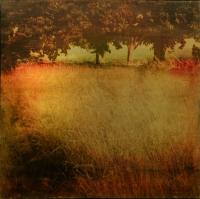The landscapes between photography and painting by Dorothy Simpson Krause
FB: One of the reasons informatics is held away from a creative use is linked with a sort of contradictory relation between simplicity and complexity in art. Certain manipulations are made extremely simpler by computers. Today one might think that the artists finally have the freedom of expression that they searched in the past, without the filter and limit of technical difficulties. At the same time, however, democratization of execution procedures may appear to reduce the value of art craft.
For example, today it is much more difficult to find a posterized photography in a gallery, and one of the reasons is that this effect can be obtained in seconds with Photoshop. Sometimes it seems that complex, difficult, long and slow procedures add value to a creative work.
I am not saying that the digital manipulation is simple, the use of computers has its difficulties and its learning curve. But I wonder if the complexity of the technique used to obtain a print add value to it. Has the spread of the computers removed the “aura” from part of the artistic productions of the past? Is it leading to an appreciation of a masterwork more for its intrinsic qualities and less for the external characteristics of the object?
DSK: I don’t think it matters how a work is produced. It’s the final product that is important.
One complex project I recently completed was as the von Hess Visiting Artist at The University of the Arts Borowsky Center, in Philadelphia. I used silver, gold and black metallic inks on the Heidelberg Offset Lithography press with a chine colle inkjet print on sheer paper.
I began the metallic offset portion of the print by scanning a metal and plaster surface and reshaping it in Photoshop to match the press dimensions. I chose a file to inset from a series of work in process called Climate Change.
Before leaving my studio, I printed the landscapes to be chine colle insets on the HP Z3100 inkjet printer on sheer tissue. I divided the Photoshop file into three “separations” which would become the silver, gold and black offset plates. At the Borowsky Center, Lori Spencer, the Master Printer, prepared the film, made the offset plates and printed the offset image onto which the silk tissue was adhered. A final touch of bright orange oil pastel was applied on top of two of the rivets in the image.
The image size is 24″ x 17.5″ on Arches hotpress 28″ x 20″. In an edition of 100, with 6 artist proofs, the final piece, “Black Gold”, references our dependence on oil and the damage to the environment caused by the burning of fossil fuels.
To read the rest of this article go to page: 1 2 3 4 5






